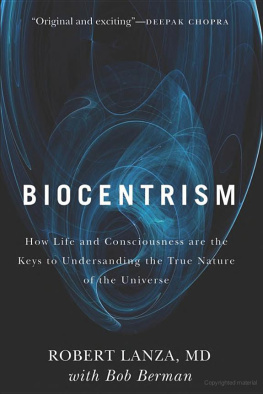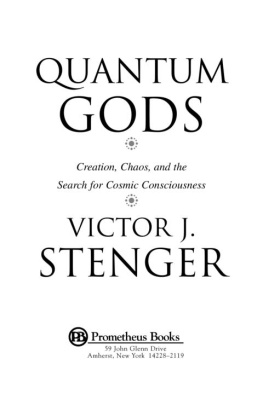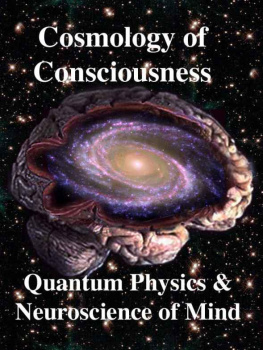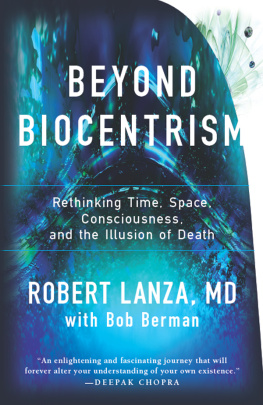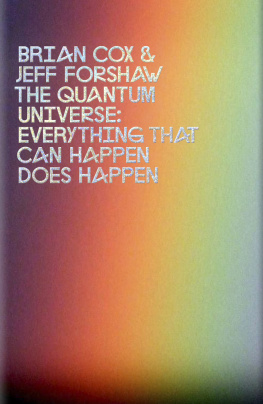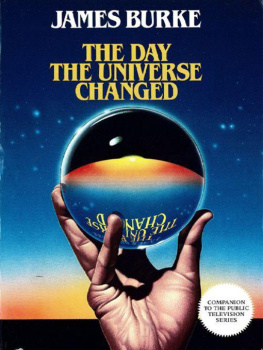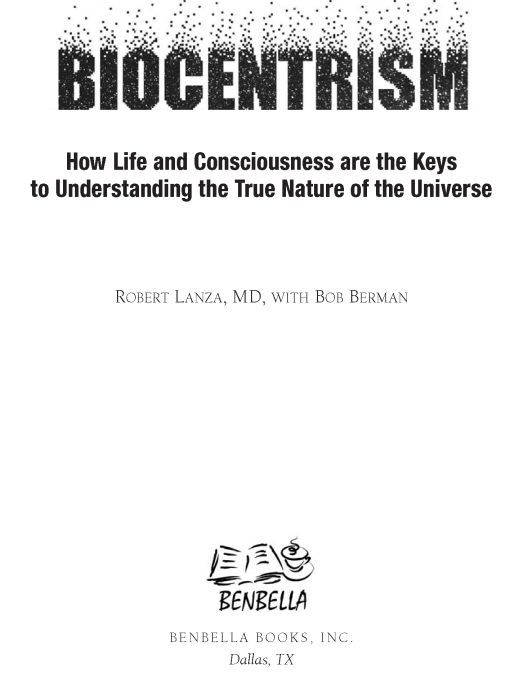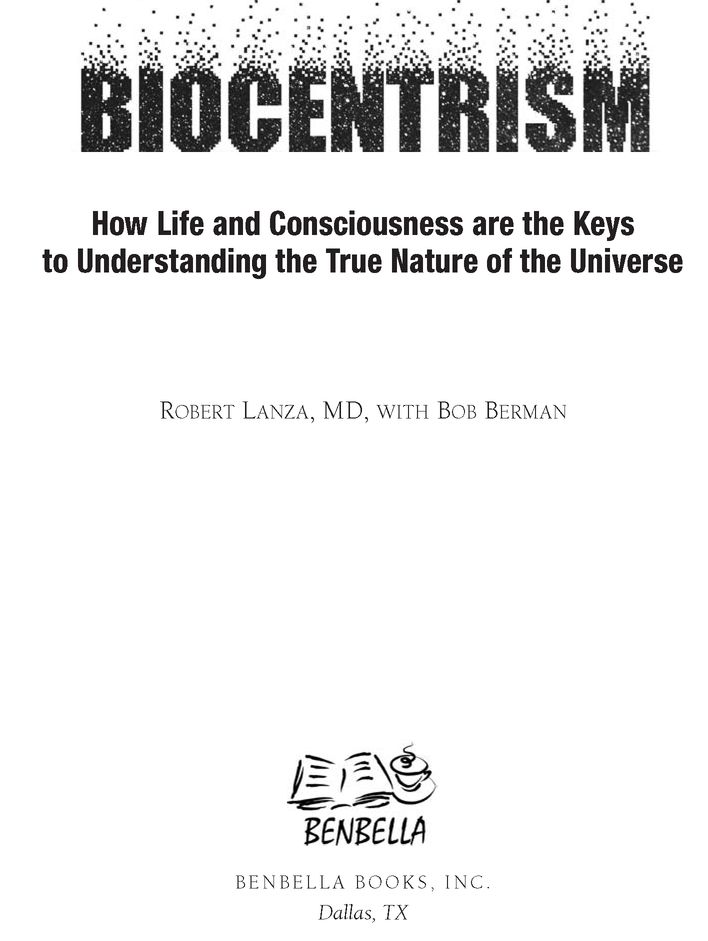Table of Contents
To Barbara ODonnell on the occasion of her ninetieth year
ACKNOWLEDGMENTS
The authors would like to thank the publisher, Glenn Yeffeth, and Nana Naisbitt, Robert Faggen, and Joe Pappalardo for their valuable assistance with the book. We would also like to thank Alan McKnight for the illustrations and Ben Mathiesen for his help with the material in the appendix. And, of course, the book wouldnt be possible without the help of our agent, Al Zuckerman.
Various portions of the material in this book appeared separately in the New Scientist, the American Scholar, the Humanist, Perspectives in Biology and Medicine, Yankee magazine, Cappers, Grit, the World & I, Pacific Discovery, and in several literary magazines, including the Cimarron Review, the Ohio Review, the Antigonish Review, the Texas Review, and High Plains Literary Review.
INTRODUCTION
Our understanding of the universe as a whole has reached a dead end. The meaning of quantum physics has been debated since it was first discovered in the 1930s, but we are no closer to understanding it now than we were then. The theory of everything that was promised for decades to be just around the corner has been stuck for decades in the abstract mathematics of string theory, with its unproven and unprovable assertions.
But its worse than that. Until recently, we thought we knew what the universe was made of, but it now turns out that 96 percent of the universe is composed of dark matter and dark energy, and we have virtually no idea what they are. Weve accepted the Big Bang, despite the increasingly greater need to jury-rig it to fit our observations (as in the 1979 acceptance of a period of exponential growth, known as inflation, for which the physics is basically unknown). It even turns out that the Big Bang has no answer for one of the greatest mysteries in the universe: why is the universe exquisitely fine-tuned to support life?
Our understanding of the fundamentals of the universe is actually retreating before our eyes. The more data we gather, the more weve had to juggle our theories or ignore findings that simply make no sense.
This book proposes a new perspective: that our current theories of the physical world dont work, and can never be made to work, until they account for life and consciousness. This book proposes that, rather than a belated and minor outcome after billions of years of lifeless physical processes, life and consciousness are absolutely fundamental to our understanding of the universe. We call this new perspective biocentrism.
In this view, life is not an accidental by-product of the laws of physics. Nor is the nature or history of the universe the dreary play of billiard balls that weve been taught since grade school.
Through the eyes of a biologist and an astronomer, we will unlock the cages in which Western science has unwittingly managed to confine itself. The twenty-first century is predicted to be the century of biology, a shift from the previous century dominated by physics. It seems fitting, then, to begin the century by turning the universe outside-in and unifying the foundations of science, not with imaginary strings that occupy equally imaginary unseen dimensions, but with a much simpler idea that is rife with so many shocking new perspectives that we are unlikely ever to see reality the same way again.
Biocentrism may seem like a radical departure from our current understanding, and it is, but the hints have appeared all around us for decades. Some of the conclusions of biocentrism may resonate with aspects of Eastern religions or certain New Age philosophies. This is intriguing, but rest assured there is nothing New Age about this book. The conclusions of biocentrism are based on mainstream science, and it is a logical extension of the work of some of our greatest scientific minds.
Biocentrism cements the groundwork for new lines of investigation in physics and cosmology. This book will lay out the principles of biocentrism, all of which are built on established science, and all of which demand a rethinking of our current theories of the physical universe.
MUDDY UNIVERSE
The universe is not only queerer than we suppose, but queerer than we can suppose.
John Haldane, Possible Worlds (1927)
The world is not, on the whole, the place described in our schoolbooks.
For several centuries, starting roughly with the Renaissance, a single mindset about the construct of the cosmos has dominated scientific thought. This model has brought us untold insights into the nature of the universeand countless applications that have transformed every aspect of our lives. But this model is reaching the end of its useful life and needs to be replaced with a radically different paradigm that reflects a deeper reality, one totally ignored until now.
This new model has not arrived suddenly, like the meteor impact that changed the biosphere 65 million years ago. Rather, it is a deep, gradual, tectonic-plate-type alteration with bases that lie so deep, they will never again return whence they came. Its genesis lurks in the underlying rational disquiet that every educated person palpably feels today. It lies not in one discredited theory, nor any single contradiction in the current laudable obsession with devising a Grand Unified Theory that can explain the universe. Rather, its problem is so deep that virtually everyone knows that something is screwy with the way we visualize the cosmos.
The old model proposes that the universe was, until rather recently, a lifeless collection of particles bouncing against each other, obeying predetermined rules that were mysterious in their origin. The universe is like a watch that somehow wound itself and that, allowing for a degree of quantum randomness, will unwind in a semi-predictable way. Life initially arose by an unknown process, and then proceeded to change form under Darwinian mechanisms that operate under these same physical rules. Life contains consciousness, but the latter is poorly understood and is, in any case, solely a matter for biologists.
But theres a problem. Consciousness is not just an issue for biologists; its a problem for physics. Nothing in modern physics explains how a group of molecules in your brain create consciousness. The beauty of a sunset, the miracle of falling in love, the taste of a delicious mealthese are all mysteries to modern science. Nothing in science can explain how consciousness arose from matter. Our current model simply does not allow for consciousness, and our understanding of this most basic phenomenon of our existence is virtually nil. Interestingly, our present model of physics does not even recognize this as a problem.
Not coincidentally, consciousness comes up again in a completely different realm of physics. It is well known that quantum theory, while working incredibly well mathematically, makes no logical sense. As we will explore in detail in future chapters, particles seem to behave as if they respond to a conscious observer. Because that cant be right, quantum physicists have deemed quantum theory inexplicable or have come up with elaborate theories (such as an infinite number of alternate universes) to try to explain it. The simplest explanationthat subatomic particles actually do interact with consciousness at some levelis too far outside the model to be seriously considered. Yet its interesting that two of the biggest mysteries of physics involve consciousness.


